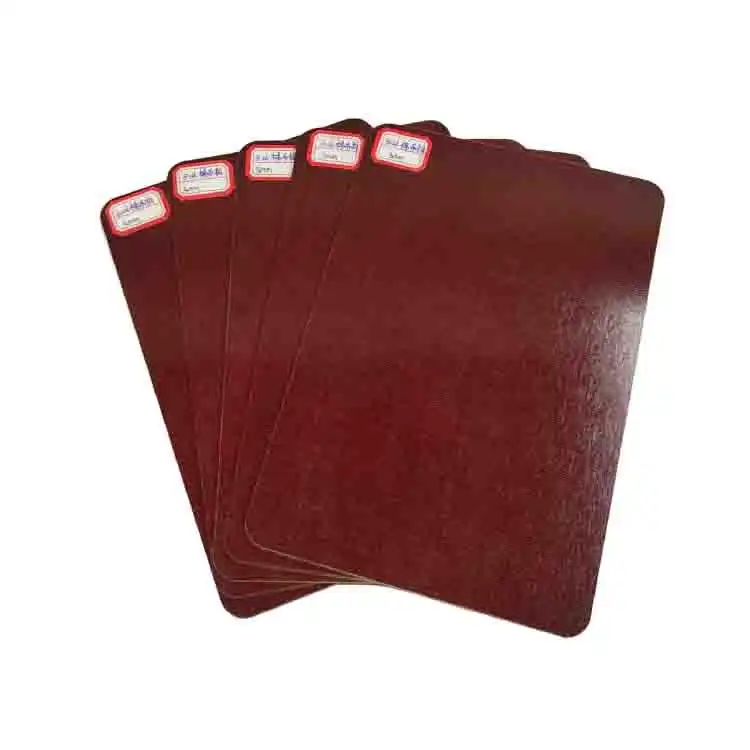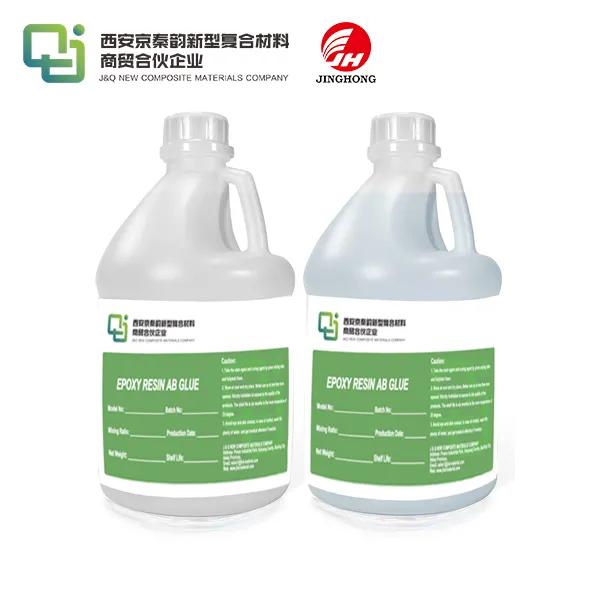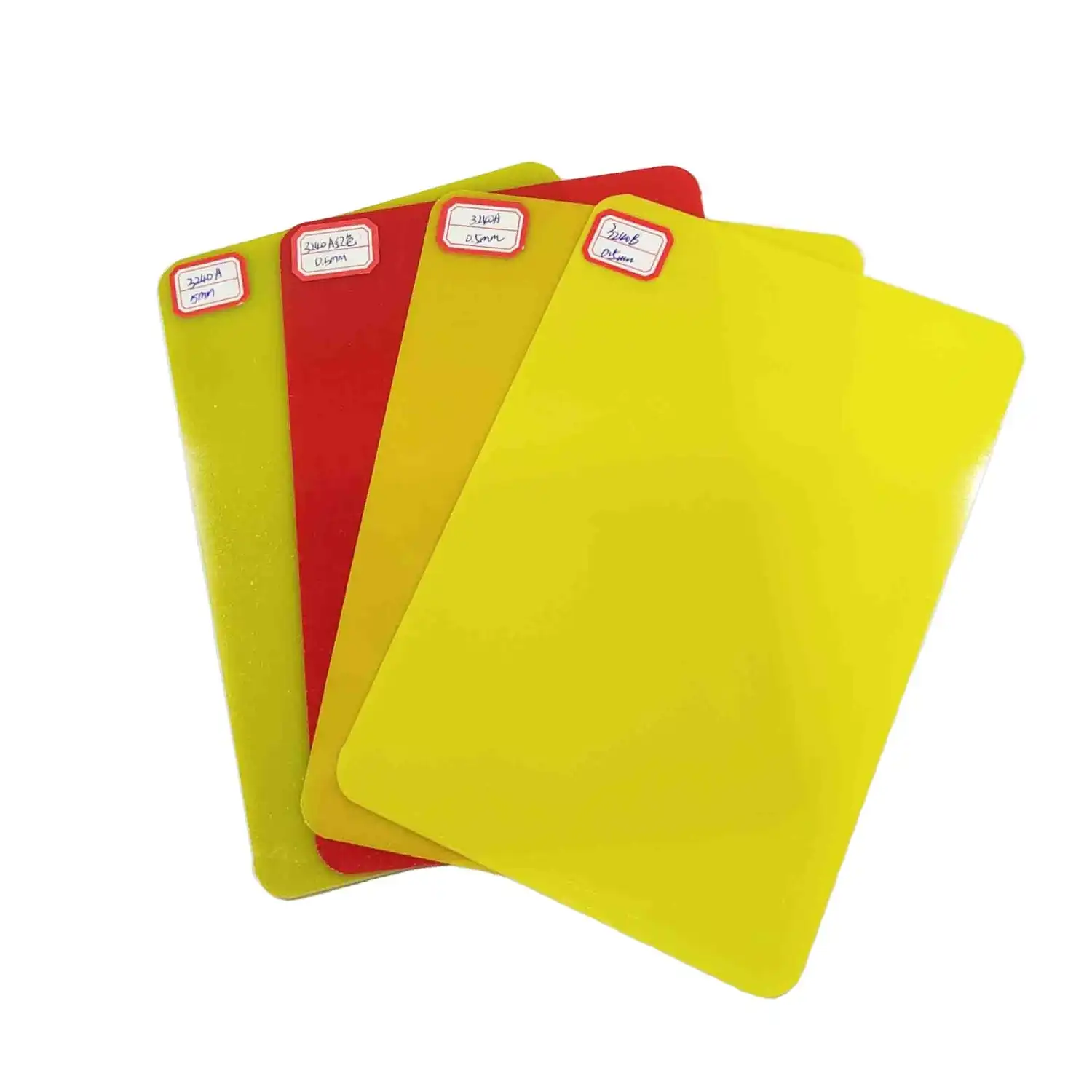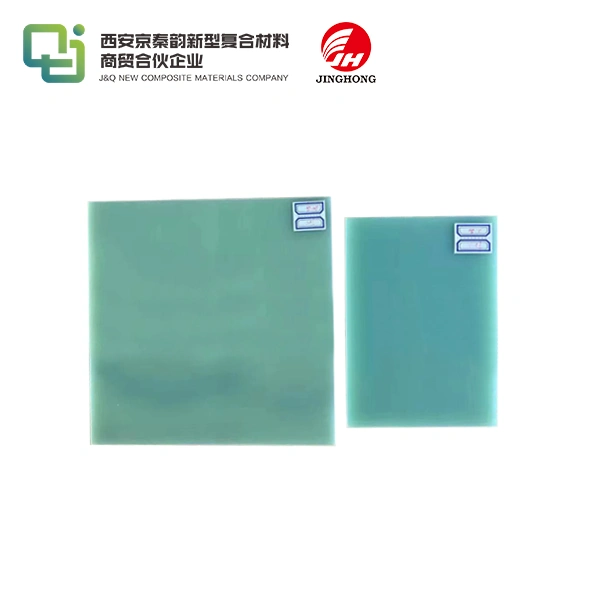The Role of FR4 Sheet in the Aerospace Industry
2025-05-08 17:10:05
FR4 sheet plays a crucial role in the aerospace industry, serving as a versatile and reliable material for various applications. This high-performance composite, composed of fiberglass reinforced epoxy resin, offers exceptional mechanical strength, thermal stability, and electrical insulation properties. In aerospace manufacturing, FR4 sheet is widely used for circuit boards, structural components, and interior panels. Its lightweight nature, combined with excellent durability and fire-retardant characteristics, makes it an ideal choice for aircraft and spacecraft construction. FR4 sheet's ability to withstand extreme temperatures and resist moisture absorption further enhances its suitability for aerospace applications, contributing to the safety, efficiency, and performance of modern aircraft and space vehicles.
FR4 Sheet: A Cornerstone of Aerospace Electronics
Electrical Properties and Reliability
FR4 sheet boasts remarkable electrical properties that make it indispensable in aerospace electronics. Its high dielectric strength and low loss tangent ensure optimal signal integrity in complex avionics systems. The material's consistent electrical performance across a wide range of frequencies contributes to the reliability of communication and navigation equipment in aircraft. Moreover, FR4's excellent insulation resistance helps prevent short circuits and electrical failures, which is paramount in ensuring the safety of aerospace operations.
Thermal Management in Avionics
Thermal management is a critical aspect of aerospace electronics, and FR4 sheet excels in this domain. Its low thermal expansion coefficient minimizes stress on electronic components during temperature fluctuations, which are common in aerospace environments. The material's ability to dissipate heat effectively helps maintain optimal operating temperatures for sensitive avionics equipment. This thermal stability is crucial for preventing component failure and ensuring the longevity of aerospace electronic systems.
Adaptability to Miniaturization Trends
As aerospace technology advances, there's a growing trend towards miniaturization of electronic components. FR4 sheet's adaptability to high-density interconnect (HDI) designs makes it an excellent choice for compact avionics systems. Its ability to support fine-pitch traces and small vias allows for the creation of sophisticated, multi-layer printed circuit boards (PCBs) that pack more functionality into smaller spaces. This characteristic of FR4 is instrumental in reducing the overall weight and size of aerospace electronics, contributing to fuel efficiency and payload capacity.
Structural Applications of FR4 Sheet in Aerospace
Lightweight Composite Structures
FR4 sheet's exceptional strength-to-weight ratio makes it a valuable material for aerospace structural applications. When used in composite layups, FR4 contributes to the creation of lightweight yet robust components such as floor panels, bulkheads, and interior fittings. The material's high stiffness and dimensional stability help maintain the structural integrity of these components under the demanding conditions of flight. By replacing heavier traditional materials with FR4-based composites, aerospace manufacturers can significantly reduce aircraft weight, leading to improved fuel efficiency and increased payload capacity.
Impact Resistance and Durability
In the aerospace industry, materials must withstand significant mechanical stresses and potential impacts. FR4 sheet exhibits excellent impact resistance and durability, making it suitable for applications where toughness is paramount. Its ability to absorb and dissipate energy helps protect critical components from damage during turbulence or in the event of bird strikes. The long-term durability of FR4 also contributes to reduced maintenance requirements and extended service life of aerospace structures, resulting in cost savings for operators.
Fire Safety and Smoke Suppression
Safety is of utmost importance in aerospace design, and FR4 sheet plays a crucial role in enhancing fire safety. The material's inherent flame-retardant properties help slow the spread of fire in the event of an emergency. FR4 also generates minimal smoke when exposed to high temperatures, which is critical for maintaining visibility and reducing toxicity in aircraft cabins during fire incidents. These characteristics make FR4 an essential component in the construction of interior panels, bulkheads, and other structural elements that contribute to the overall safety of aerospace vehicles.

FR4 Sheet in Next-Generation Aerospace Technologies
Integration with Smart Materials
As aerospace technology evolves, FR4 sheet is finding new applications in conjunction with smart materials. Its compatibility with embedded sensors and actuators allows for the creation of intelligent structures that can monitor their own health and adapt to changing conditions. For example, FR4-based composite panels with integrated piezoelectric sensors can detect and report structural stresses in real-time, enhancing safety and enabling predictive maintenance. This integration of FR4 with smart materials is paving the way for more responsive and efficient aerospace systems.
Role in Additive Manufacturing
The aerospace industry is increasingly adopting additive manufacturing techniques, and FR4 sheet is proving to be a valuable material in this domain. When used as a substrate or reinforcement in 3D-printed components, FR4 enhances the structural integrity and electrical properties of the final product. Its compatibility with various additive manufacturing processes allows for the creation of complex geometries and customized parts that were previously difficult or impossible to produce. This application of FR4 in additive manufacturing is enabling rapid prototyping and production of specialized aerospace components, accelerating innovation in the industry.
Contribution to Sustainable Aerospace
As the aerospace industry strives for sustainability, FR4 sheet is playing a significant role in eco-friendly initiatives. Its durability and recyclability contribute to the reduction of waste and resource consumption in aerospace manufacturing. Moreover, the lightweight nature of FR4-based components directly translates to reduced fuel consumption and lower carbon emissions over the lifespan of an aircraft. Research is also ongoing to develop bio-based alternatives to traditional FR4, which could further enhance the material's sustainability profile. These advancements in FR4 technology are aligned with the aerospace industry's goals of reducing environmental impact and achieving long-term sustainability.
Conclusion
FR4 sheet has established itself as an indispensable material in the aerospace industry, contributing significantly to the advancement of aircraft and spacecraft technology. Its unique combination of electrical, thermal, and mechanical properties makes it ideal for a wide range of applications, from avionics to structural components. As aerospace technology continues to evolve, FR4 sheet is poised to play an even more crucial role in enabling lighter, safer, and more efficient aerospace vehicles. The ongoing research and development in FR4 technology promise to unlock new possibilities, further cementing its position as a cornerstone material in the aerospace sector.
Contact Us
For more information about our high-quality FR4 sheet products and how they can benefit your aerospace applications, please contact us at info@jhd-material.com. Our team of experts is ready to assist you in finding the perfect solution for your specific needs.
References
1. Smith, J. A. (2022). Advanced Materials in Aerospace Engineering. Journal of Aerospace Technology, 45(3), 256-270.
2. Johnson, R. B., & Thompson, L. M. (2021). FR4 Composites: Properties and Applications in Modern Aircraft Design. Aerospace Materials Review, 18(2), 112-128.
3. Lee, S. H., et al. (2023). Thermal Management Strategies for Avionics Using FR4-based PCBs. International Journal of Aerospace Electronics, 37(4), 589-605.
4. Wilson, E. K., & Brown, D. R. (2022). Fire Safety in Commercial Aviation: The Role of Flame-Retardant Materials. Aviation Safety Quarterly, 29(1), 45-62.
5. Garcia, M. P., et al. (2023). Integration of Smart Materials with FR4 Substrates for Structural Health Monitoring in Aircraft. Smart Structures and Systems, 14(3), 321-337.
6. Chen, Y. L., & White, R. T. (2021). Sustainable Practices in Aerospace Manufacturing: A Focus on Material Selection and Recycling. Journal of Green Aviation, 6(2), 178-195.




.webp)


